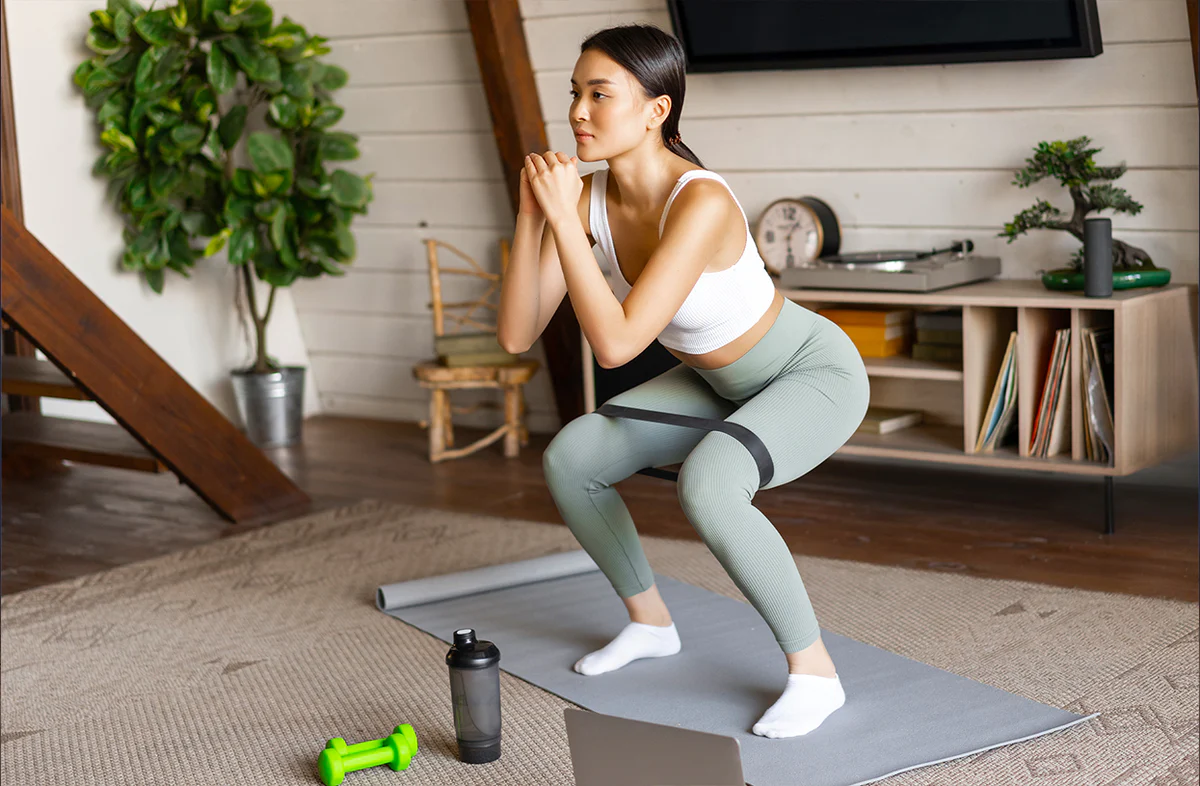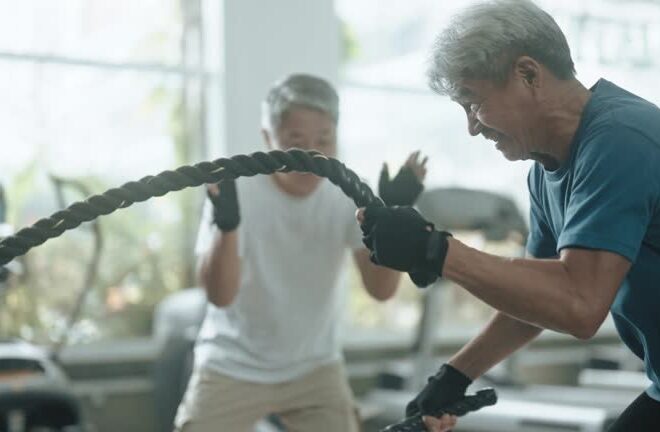
Top 10 Strength Training Exercises Explained Simply
Strength training is one of the most effective ways to improve overall fitness, build muscle, and enhance endurance. Whether you’re new to the gym or an experienced athlete, incorporating strength training into your routine offers a variety of benefits, from boosting metabolism to improving posture and bone health. But with so many exercises to choose from, it can be overwhelming to know where to begin. In this article, we’ll break down the top 10 strength training exercises, explaining them in simple terms and providing insight into how each one can contribute to your fitness goals.
1. Squats: The Foundation of Lower Body Strength
Squats are often referred to as the “king” of all strength training exercises, and for good reason. They target multiple muscle groups, including the quadriceps, hamstrings, glutes, and core. The movement mimics everyday activities like sitting down and standing up, making it both functional and highly effective.
How to do it:
-
Stand with your feet shoulder-width apart.
-
Lower your body by bending at the hips and knees, keeping your chest up and your back straight.
-
Aim to lower your thighs parallel to the floor or deeper, if comfortable.
-
Push through your heels to return to the starting position.
Why it works: Squats build lower body strength, enhance mobility, and can even help improve your posture. They are crucial for any strength training routine and provide a solid foundation for more advanced exercises.
2. Deadlifts: The Ultimate Posterior Chain Exercise
Deadlifts are often hailed as one of the most effective exercises for building strength in the posterior chain, which includes the hamstrings, glutes, and lower back. They engage multiple muscle groups, making them excellent for overall strength development.
How to do it:
-
Stand with your feet hip-width apart and a barbell in front of you.
-
Bend at the hips and knees to grip the bar with both hands, keeping your back straight and your chest lifted.
-
Push through your heels to lift the barbell, extending your hips and knees.
-
Lower the barbell back to the ground with control.
Why it works: Deadlifts improve posture, core strength, and functional strength, as they replicate the action of picking up heavy objects from the ground. They also help to build a strong, toned back and glutes.
3. Push-ups: The Classic Upper Body Strengthener
Push-ups are a classic bodyweight exercise that primarily targets the chest, shoulders, and triceps. They also engage the core for stabilization, making them a great compound movement.
How to do it:
-
Start in a plank position, with your hands placed slightly wider than shoulder-width apart.
-
Lower your body toward the ground by bending your elbows, keeping your body in a straight line.
-
Push yourself back up to the starting position.
Why it works: Push-ups are excellent for developing upper body strength, particularly in the chest and arms. They also improve core stability and can be modified to suit any fitness level by adjusting hand placement or performing them on the knees.
4. Pull-ups: Upper Body Strength for the Win
Pull-ups are a challenging yet highly effective exercise for building upper body strength. They target the back, biceps, and shoulders, helping to improve overall upper body muscle definition.
How to do it:
-
Grab a pull-up bar with your palms facing away from you (overhand grip).
-
Hang from the bar with your arms fully extended.
-
Pull your body upward by engaging your back and biceps, bringing your chin above the bar.
-
Slowly lower your body back to the starting position.
Why it works: Pull-ups are a fantastic way to strengthen the upper body, particularly the back and arms. They also improve grip strength and overall coordination.
5. Lunges: Unilateral Leg Strength
Lunges are a fantastic lower body exercise that targets the quads, hamstrings, and glutes. Unlike squats, which are a bilateral movement, lunges work each leg independently, which helps to improve balance and address any strength imbalances between the legs.
How to do it:
-
Stand tall with your feet hip-width apart.
-
Take a large step forward with one leg and lower your body until both knees are at about 90-degree angles.
-
Push through the heel of your front foot to return to the starting position.
-
Repeat on the other leg.
Why it works: Lunges are great for building strength in the lower body, improving balance, and enhancing mobility. They also help to correct any muscle imbalances between the legs.
6. Bench Press: Building Upper Body Strength
The bench press is a staple exercise in strength training, targeting the chest, shoulders, and triceps. It is a great movement for building upper body pushing strength and muscle mass.
How to do it:
-
Lie flat on a bench with your feet planted firmly on the floor.
-
Grip the barbell with your hands slightly wider than shoulder-width apart.
-
Lower the barbell to your chest while keeping your elbows at about a 45-degree angle.
-
Push the barbell back up to the starting position.
Why it works: The bench press is essential for developing chest strength and muscle mass. It also engages the triceps and shoulders, helping to build a strong upper body.
7. Overhead Press: Strengthening Shoulders and Arms
The overhead press, or shoulder press, targets the shoulders, triceps, and upper chest. It is a key exercise for building strength in the upper body and is often included in any well-rounded strength training program.
How to do it:
-
Stand with your feet shoulder-width apart, holding a barbell or dumbbells at shoulder height.
-
Press the weight overhead until your arms are fully extended.
-
Lower the weight back down to shoulder height with control.
Why it works: The overhead press is an excellent exercise for building shoulder strength and improving upper body stability. It also engages the core to help stabilize the body during the press.
8. Planks: Core Strength and Stability
The plank is a simple but incredibly effective core exercise that targets the abs, obliques, and lower back. It’s an isometric hold that strengthens the entire core without any dynamic movement.
How to do it:
-
Start in a forearm plank position with your body in a straight line from head to heels.
-
Engage your core, keeping your hips in line with your shoulders.
-
Hold the position for as long as you can while maintaining proper form.
Why it works: Planks are a great way to build core strength and improve stability, which is essential for almost every other exercise. A strong core helps with posture and reduces the risk of injury.
9. Kettlebell Swings: Full-Body Power
Kettlebell swings are a dynamic exercise that targets the hips, glutes, hamstrings, core, and even the shoulders. It’s a powerful movement that improves cardiovascular fitness while building strength and power.
How to do it:
-
Stand with your feet slightly wider than hip-width apart, holding a kettlebell with both hands.
-
Hinge at the hips and swing the kettlebell back between your legs.
-
Drive your hips forward to propel the kettlebell up to shoulder height, keeping your core engaged.
Why it works: Kettlebell swings improve explosive power, strengthen the posterior chain, and enhance endurance. They’re also great for boosting heart rate and burning calories.
10. Dumbbell Rows: Back Strength and Definition
Dumbbell rows are a key exercise for strengthening the back, particularly the latissimus dorsi (lats), traps, and rhomboids. Strong back muscles help improve posture and support overall upper body strength.
How to do it:
-
Place one knee and hand on a bench for support, with the other foot planted firmly on the floor.
-
Hold a dumbbell in your free hand and extend your arm toward the floor.
-
Pull the dumbbell toward your torso, squeezing your shoulder blade at the top.
-
Slowly lower the dumbbell back down.
Why it works: Dumbbell rows are excellent for building upper back strength and improving posture. They also target the biceps and shoulders, contributing to a balanced upper body workout.
Conclusion
Strength training is a cornerstone of physical fitness, offering numerous benefits for overall health, endurance, and muscle mass. Incorporating the right exercises into your routine is key to achieving your fitness goals. The top 10 strength training exercises covered here are essential movements that engage multiple muscle groups, build strength, and improve functional fitness. By understanding and implementing these exercises with proper form, you can maximize your results, save time, and enjoy a stronger, more sculpted body.



